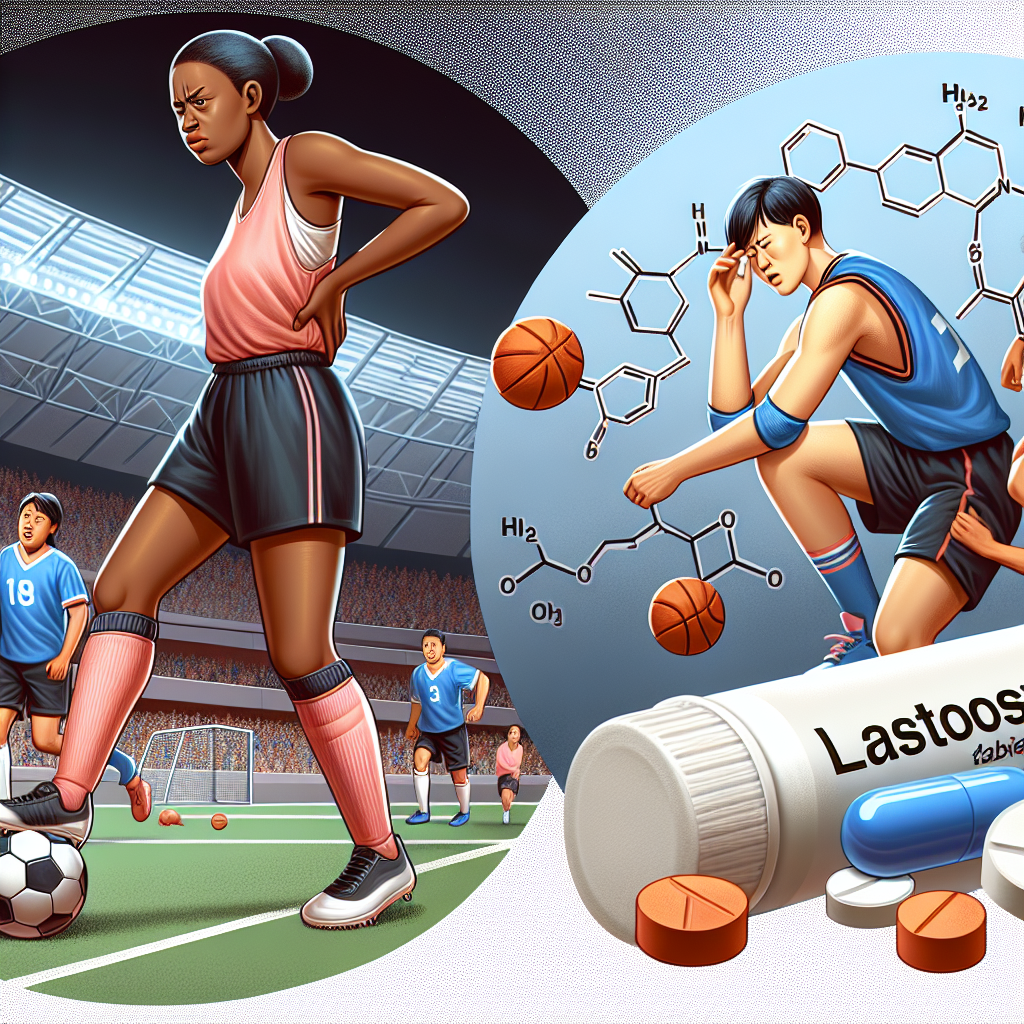-
Table of Contents
Side Effects of Anastrozole in Sports
Anastrozole, also known by its brand name Arimidex, is a medication commonly used in the treatment of breast cancer. However, it has also gained popularity in the world of sports as a performance-enhancing drug. As with any medication, anastrozole comes with potential side effects that athletes should be aware of before incorporating it into their training regimen. In this article, we will explore the pharmacokinetics and pharmacodynamics of anastrozole, as well as its potential side effects in the context of sports performance.
Pharmacokinetics of Anastrozole
Anastrozole is classified as an aromatase inhibitor, meaning it works by blocking the production of estrogen in the body. It is primarily metabolized in the liver and has a half-life of approximately 50 hours (Nabholtz et al. 2000). This means that it can take up to 10 days for the drug to be completely eliminated from the body. Anastrozole is available in both oral and injectable forms, with the oral form being the most commonly used in sports.
When taken orally, anastrozole is rapidly absorbed into the bloodstream and reaches peak plasma concentrations within 2 hours (Nabholtz et al. 2000). It is then distributed throughout the body, with the majority of the drug being bound to proteins in the blood. The remaining unbound drug is metabolized in the liver and excreted in the urine and feces.
Pharmacodynamics of Anastrozole
The primary mechanism of action of anastrozole is its ability to inhibit the enzyme aromatase, which is responsible for converting androgens into estrogen. By blocking this conversion, anastrozole effectively reduces the levels of estrogen in the body. This can have a number of effects on sports performance, including increased muscle mass, improved endurance, and reduced water retention.
Estrogen is known to have a negative impact on muscle growth, as it can increase the production of cortisol, a hormone that breaks down muscle tissue. By reducing estrogen levels, anastrozole can help athletes build lean muscle mass more effectively. Additionally, estrogen is also responsible for water retention, which can lead to bloating and weight gain. By inhibiting estrogen production, anastrozole can help athletes achieve a leaner, more defined physique.
Potential Side Effects of Anastrozole
While anastrozole may offer benefits for athletes, it is important to note that it also comes with potential side effects. These side effects can vary depending on the individual and the dosage used, but some of the most common include:
- Joint pain and stiffness
- Hot flashes
- Headaches
- Nausea
- Fatigue
- Decreased libido
One of the most concerning side effects of anastrozole is its potential impact on bone health. Estrogen plays a crucial role in maintaining bone density, and by inhibiting its production, anastrozole can increase the risk of osteoporosis and bone fractures (Hadji et al. 2013). This is especially concerning for athletes who engage in high-impact sports that put stress on their bones.
Another potential side effect of anastrozole is its impact on cholesterol levels. Estrogen is known to have a positive effect on cholesterol, increasing levels of HDL (good) cholesterol and decreasing levels of LDL (bad) cholesterol. By reducing estrogen levels, anastrozole can have the opposite effect, potentially increasing the risk of heart disease and other cardiovascular issues.
Expert Opinion
While anastrozole may offer some benefits for athletes, it is important to weigh these potential benefits against the potential side effects. As with any medication, it is crucial to consult with a healthcare professional before incorporating anastrozole into your training regimen. Additionally, regular monitoring of bone health and cholesterol levels is recommended for athletes using anastrozole long-term.
It is also important to note that anastrozole is a banned substance in most sports organizations, including the World Anti-Doping Agency (WADA). Athletes who are subject to drug testing should be aware of this and consider the potential consequences before using anastrozole.
References
Hadji, P., Aapro, M.S., Body, J.J., Gnant, M., Brandi, M.L., Reginster, J.Y., Zillikens, M.C., Glüer, C.C., de Villiers, T., Baber, R., Roodman, G.D., Cooper, C., Langdahl, B., Palacios, S., Kanis, J.A., Al-Daghri, N., Nogues, X., Eriksen, E.F., Kurth, A., Rizzoli, R., Coleman, R.E. (2013). Management of Aromatase Inhibitor-Associated Bone Loss (AIBL) in postmenopausal women with hormone sensitive breast cancer: Joint position statement of the IOF, CABS, ECTS, IEG, ESCEO, IMS, and SIOG. Journal of Bone Oncology, 2(2), 77-88.
Nabholtz, J.M., Buzdar, A., Pollak, M., Harwin, W., Burton, G., Mangalik, A., Steinberg, M., Webster, A., von Euler, M., & Senn, H.J. (2000). Anastrozole is superior to tamoxifen as first-line therapy for advanced breast cancer in postmenopausal women: Results of a North American multicenter randomized trial. Journal of Clinical Oncology, 18(22), 3758-3767.











